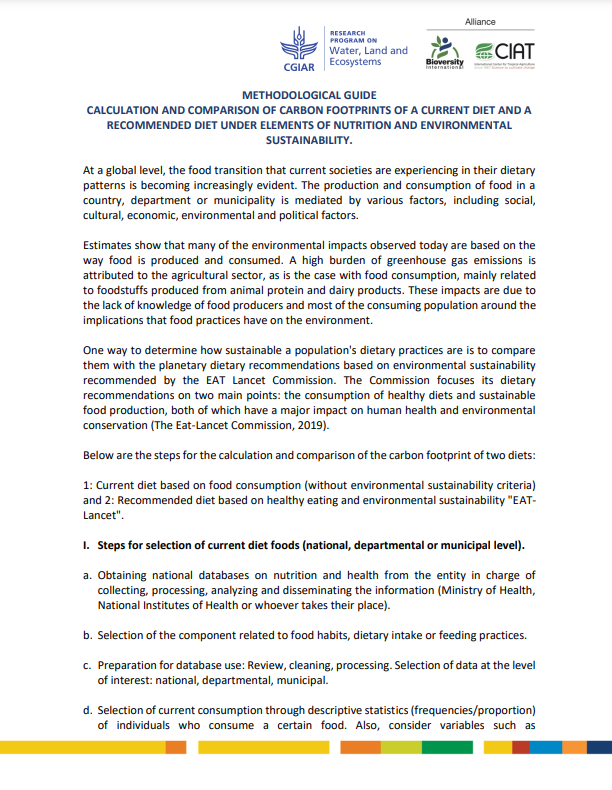At a global level, the food transition that current societies are experiencing in their dietary patterns is becoming increasingly evident. The production and consumption of food in a country, department or municipality is mediated by various factors, including social, cultural, economic, environmental and political factors.
Estimates show that many of the environmental impacts observed today are based on the way food is produced and consumed. A high burden of greenhouse gas emissions is attributed to the agricultural sector, as is the case with food consumption, mainly related to foodstuffs produced from animal protein and dairy products. These impacts are due to the lack of knowledge of food producers and most of the consuming population around the implications that food practices have on the environment.
One way to determine how sustainable a population’s dietary practices are is to compare them with the planetary dietary recommendations based on environmental sustainability recommended by the EAT Lancet Commission. The Commission focuses its dietary recommendations on two main points: the consumption of healthy diets and sustainable food production, both of which have a major impact on human health and environmental conservation (The Eat-Lancet Commission, 2019).
Hurtado-Bermudez, Leidy Johanna; Montoya-Diaz, Juan Camilo.

